Connectivity, Robotics Take Center Stage at Embedded World 2024Connectivity, Robotics Take Center Stage at Embedded World 2024
Microsoft, AWS, BlackBerry and Texas Instruments will be some of the companies featuring their technologies at this year’s event

Embedded World 2024 is about to get underway and this year will showcase the latest innovations in embedded systems, incorporating software and hardware updates with a particular focus on IoT technologies, AI and machine-to-machine communication tech.
Embedded World takes place this week, April 9-11 in Nuremberg, Germany.
The event will feature approximately 1,000 exhibitors including BlackBerry, AWS, Microsoft and Texas Instruments.
Whether you’re attending Embedded World in person or virtually, here are some of the technologies worth checking out.
BlackBerry’s Surgical Robotic Arm
BlackBerry will debut its surgical robotic arm at this year’s event, powered by the latest iteration of its operating system for embedded tech, the QNX Software Development Platform 8.0.
The robotic arm uses a haptic controller to provide more precision to surgeons, allowing procedures to be undertaken with more efficiency and less room for error.
Other QNX- enabled technologies on display from BlackBerry will include the QNX OS and Hypervisor in the cloud, demonstrated using a QNX virtual cockpit.
With potential applications in industries including automotive, robotics, medical and industrial automation, the QNX virtual cockpit consolidates various in-vehicle systems into a unified place, utilizing QNX Hypervisor to run multiple mixed-criticality systems on a single system-on-a-chip design.
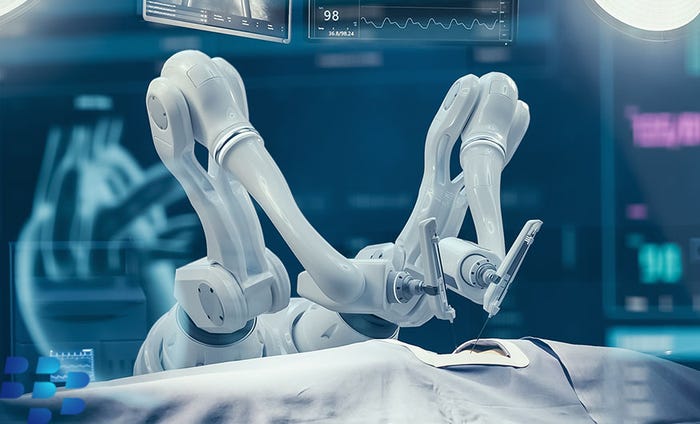
Microsoft Azure’s Multi-Access Edge Compute
Visitors at this year’s event will be able to see Microsoft Azure’s multi-access edge compute (MCE) tech, which the company said offers low latency and high-bandwidth connectivity for IoT and other edge devices, enabling real-time data processing and decision-making.
Microsoft says one of its focal points for the event is its new adaptive cloud strategy, designed to help businesses integrate cloud technology into their physical operations.
“Our adaptive cloud approach unifies teams, sites, and systems into single operations, application, and data model,” according to a Microsoft blog post. “Enabling organizations to leverage cloud-native technology and AI to work simultaneously across hybrid, multi-cloud, edge, distributed computing and IoT.”
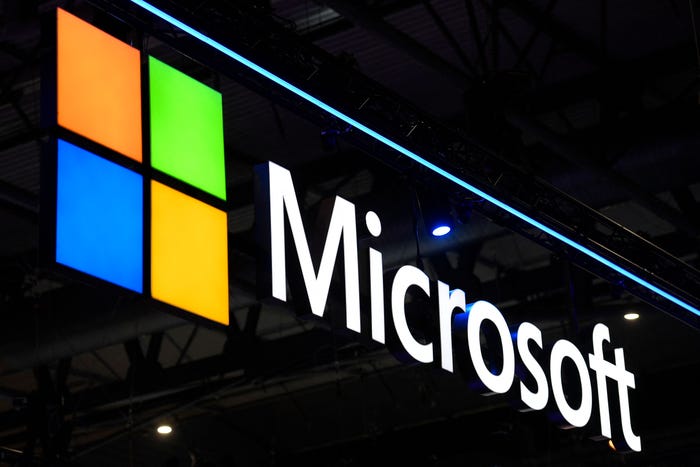
AWS’ AI-Enabled Robotic Arms, Virtual Cockpit
Amazon Web Services (AWS) will be demonstrating its IoT devices at Embedded World, which the company said are “tailored” to the embedded industry.
One demo will feature two robotic arms playing chess against one another, highlighting the combination of generative AI, IoT and robotics to “showcase the value of smart, automated routines through IoT data.”
“With a combination of advanced artificial intelligence and industrial control algorithms, the robotic arms are able to exhibit human-like reasoning and complex decision patterns when making their moves,” AWS said.
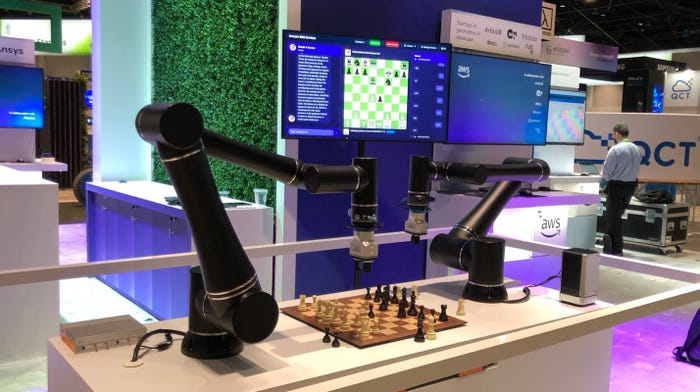
Another demonstration will showcase a connected vehicle cockpit, featuring advanced sensor technologies integrated with AWS.
Visitors can go on a drive through a virtual city, with AWS’s sensors used to provide real-time data and help users navigate through the digital environment.
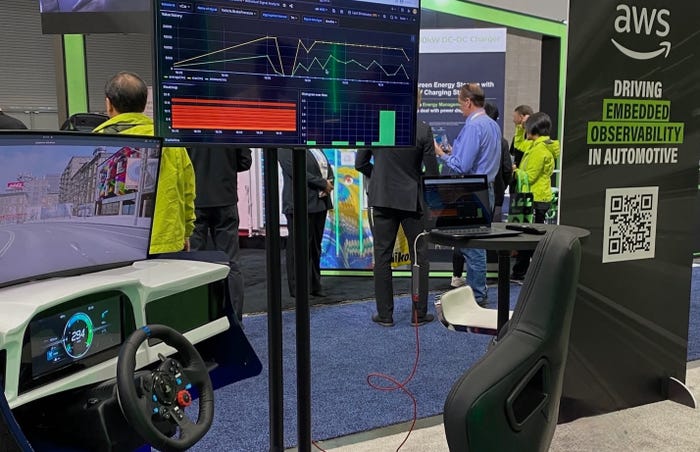
Texas Instruments Connectivity Products
Texas Instruments (TI) will be demonstrating its latest embedded processing and connectivity products at this year’s event, with potential application areas including robotics, energy transition and electric vehicles.
"Advancements in embedded processing are redefining the potential of industrial and automotive applications around the world," said Amichai Ron, TI’s senior vice president. "Whether it's a robotic arm, a software-defined vehicle or an energy storage system, a vast array of subsystems and features are enabling more sensing, motor control, communications and edge-AI capabilities than ever before."
Among the tech on display, TI will showcase embedded Arm-based processors with integrated AI accelerators, as well as microcontrollers for industrial, medical and automotive systems and robots.
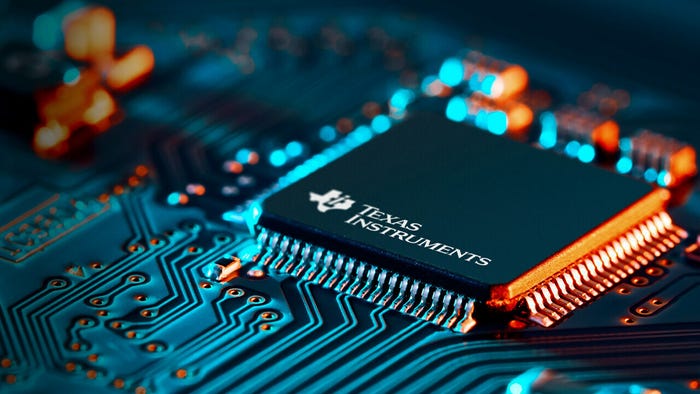
Quectel Wireless’ IoT Tech
Quectel Wireless Solutions will also be showcasing its IoT tech at Embedded World, including its 5G and LTE-M/NB-IoT modules, as well as GNSS positioning modules.
Quectel will demonstrate some of its innovations deployed in its customers’ products, including Broadcast Sports International’s 5G-enabled broadcasting tool that “opens new horizons” for live sports and events coverage, and the ZCS Lawn Mower Robot, powered by Quectel’s GNSS module, the LG69T.
Quectel will also feature tech from Sixfab on its stand, in particular its 5G, ready-to-connect IoT computer for high-speed applications.
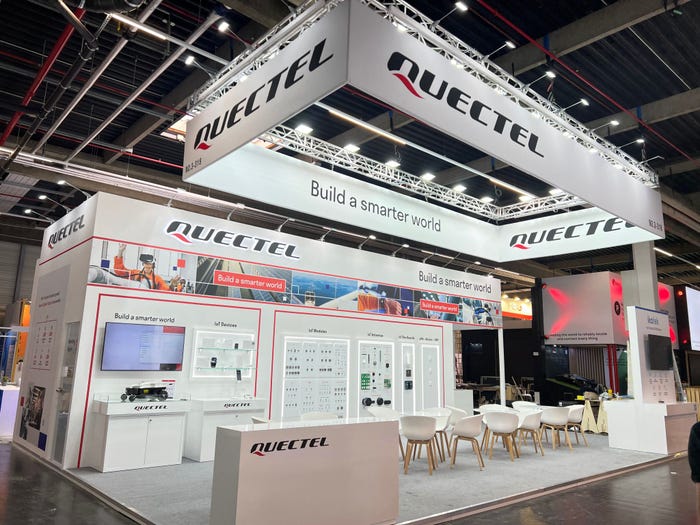
Renesas Electronics’ Connectivity Solutions
Renesas Electronics will showcase its portfolio of connectivity solutions for industrial, automotive and consumer applications.
Technologies on display will include AI solutions for vision and real-time analytics, automotive solutions for automated driving assistance and electric vehicle tech, and wireless connectivity services leveraging Wi-Fi and Bluetooth.
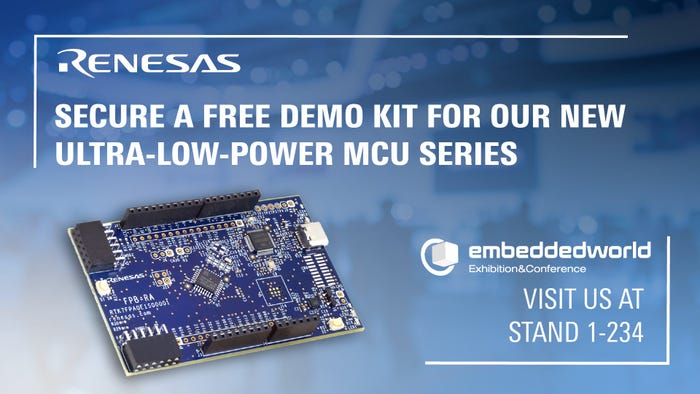
DFI Launches Windows-on-Arm Products
Industrial computer company DFI is set to launch its new product lineup featuring Windows on Arm (WoA) at Embedded World 2024.
DFI NXP products include Single Board Computers, system-embedded Box PCs and Panel PCs tailored to various customer needs.
DFI said its WoA products are ideal for deployment in compact spaces and on devices with small form factors – with their small scale making them environmentally friendly computing solutions.
The WoA lineup was also designed to provide enhanced user experiences for automation and self-service terminal applications, such as vending machines and kiosks.
“We look forward to meeting the diverse needs of our customers through early development of Arm architecture products, seamlessly integrating WoA into our product line to provide high power efficiency solutions,” said Alexander Su, DFI’s president. “This marks a significant step forward in entering the Windows on Arm field, with the promise of enhancing device computing performance, cost-effectiveness, and deployment flexibility in the future."
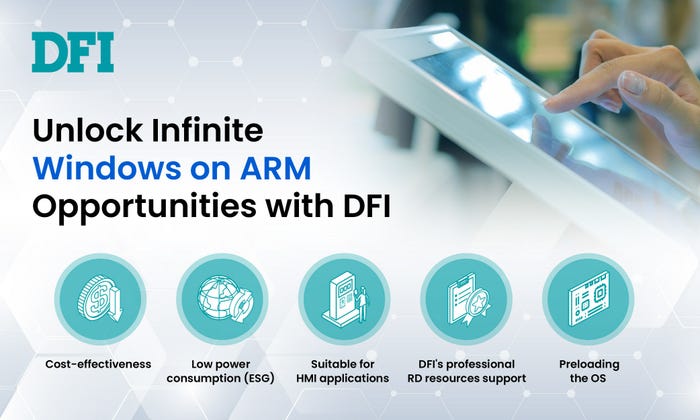
Read more about:
Embedded WorldAbout the Author
You May Also Like






